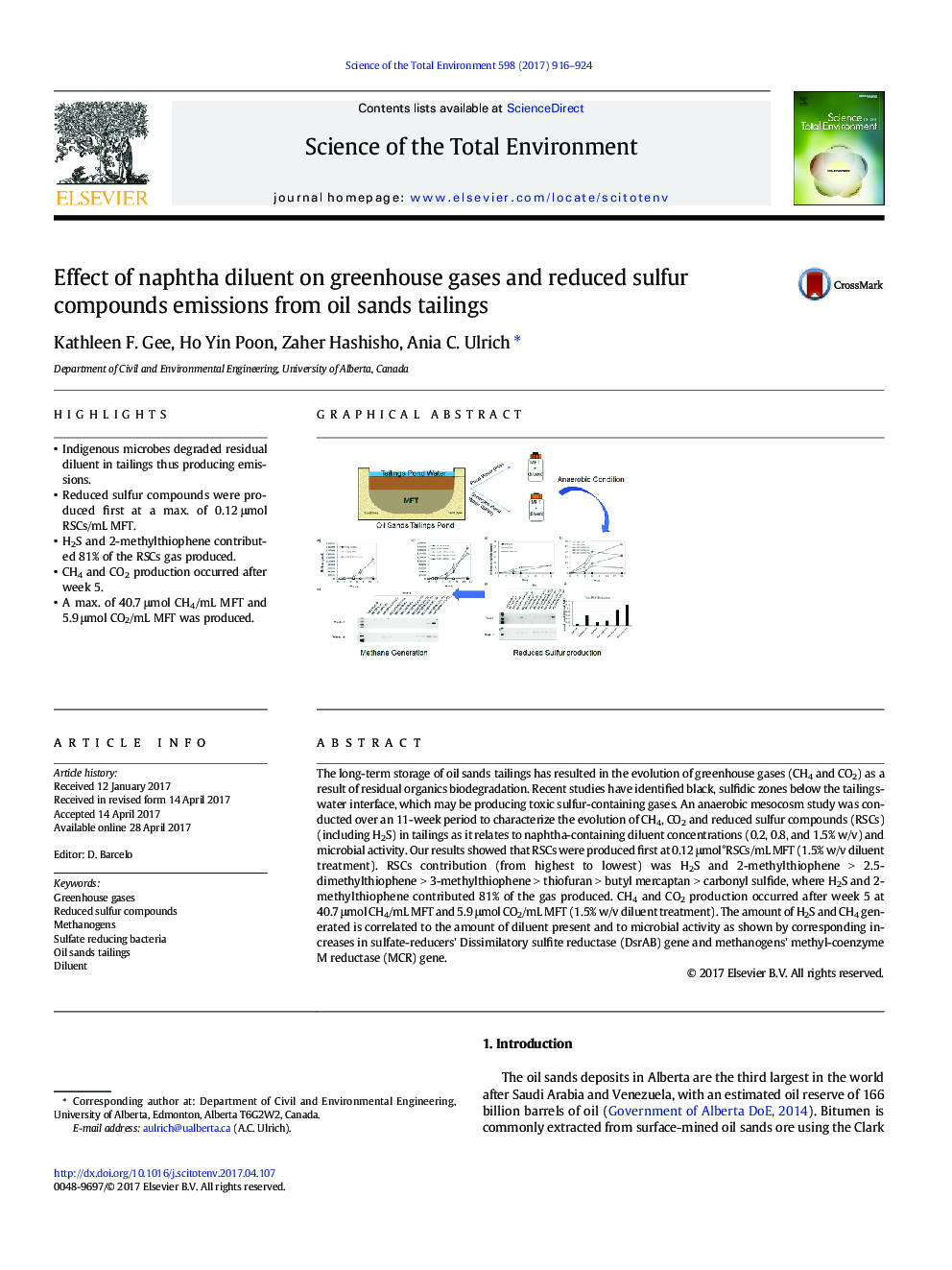| Article ID | Journal | Published Year | Pages | File Type |
|---|---|---|---|---|
| 5751005 | Science of The Total Environment | 2017 | 9 Pages |
â¢Indigenous microbes degraded residual diluent in tailings thus producing emissions.â¢Reduced sulfur compounds were produced first at a max. of 0.12 μmol RSCs/mL MFT.â¢H2S and 2-methylthiophene contributed 81% of the RSCs gas produced.â¢CH4 and CO2 production occurred after week 5.â¢A max. of 40.7 μmol CH4/mL MFT and 5.9 μmol CO2/mL MFT was produced.
The long-term storage of oil sands tailings has resulted in the evolution of greenhouse gases (CH4 and CO2) as a result of residual organics biodegradation. Recent studies have identified black, sulfidic zones below the tailings-water interface, which may be producing toxic sulfur-containing gases. An anaerobic mesocosm study was conducted over an 11-week period to characterize the evolution of CH4, CO2 and reduced sulfur compounds (RSCs) (including H2S) in tailings as it relates to naphtha-containing diluent concentrations (0.2, 0.8, and 1.5% w/v) and microbial activity. Our results showed that RSCs were produced first at 0.12 μmol°RSCs/mL MFT (1.5% w/v diluent treatment). RSCs contribution (from highest to lowest) was H2S and 2-methylthiophene > 2.5-dimethylthiophene > 3-methylthiophene > thiofuran > butyl mercaptan > carbonyl sulfide, where H2S and 2-methylthiophene contributed 81% of the gas produced. CH4 and CO2 production occurred after week 5 at 40.7 μmol CH4/mL MFT and 5.9 μmol CO2/mL MFT (1.5% w/v diluent treatment). The amount of H2S and CH4 generated is correlated to the amount of diluent present and to microbial activity as shown by corresponding increases in sulfate-reducers' Dissimilatory sulfite reductase (DsrAB) gene and methanogens' methyl-coenzyme M reductase (MCR) gene.
Graphical abstractDownload high-res image (189KB)Download full-size image
